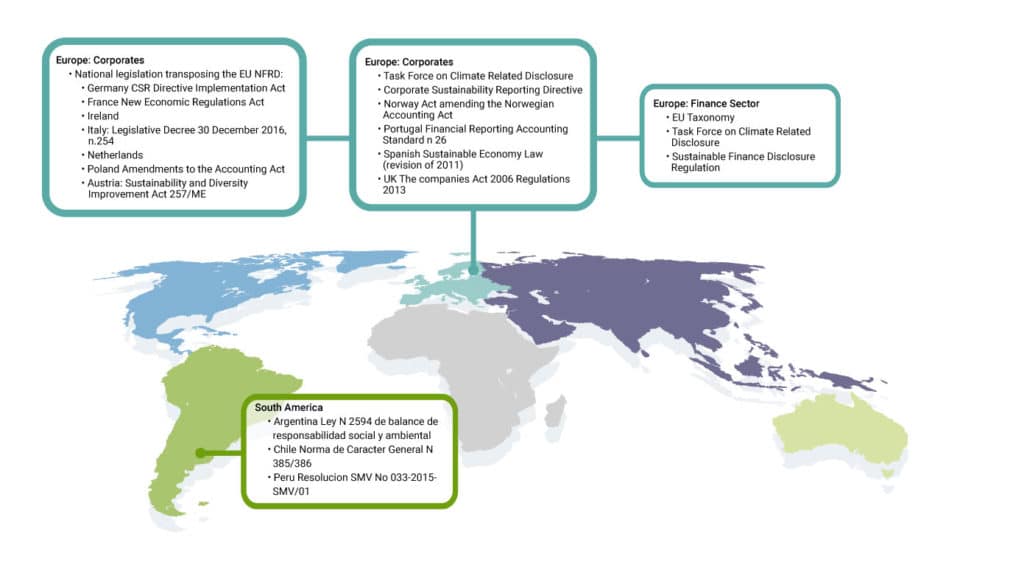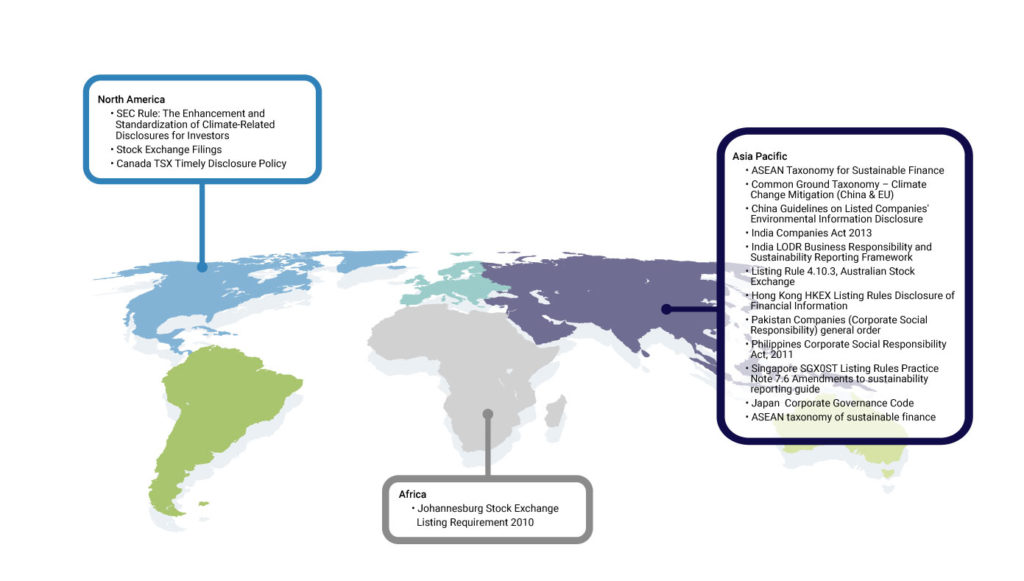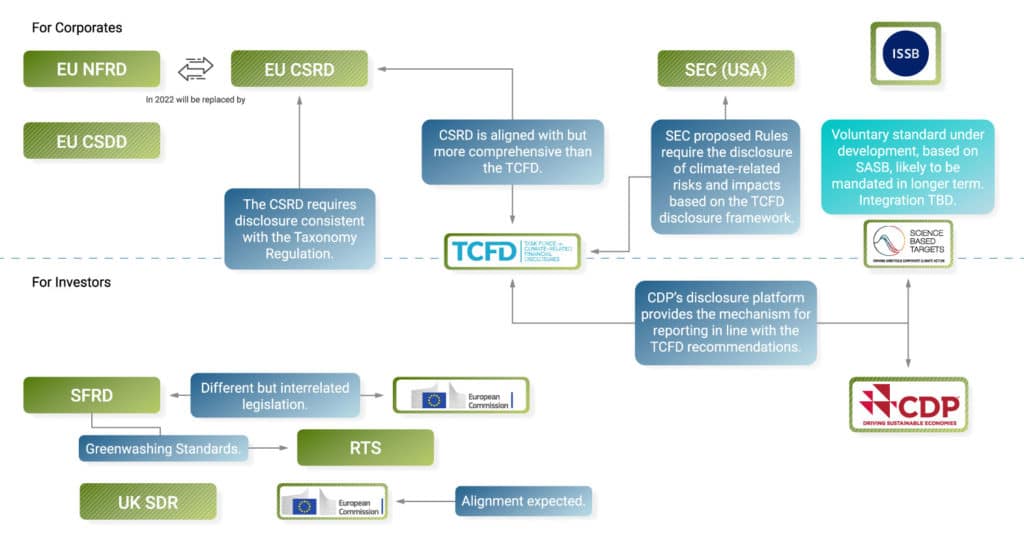The voluntary frameworks and legislative instruments that currently guide ESG disclosures are in a state of rapid evolution. Companies that have undertaken sustainability reporting or ESG disclosure will be uncomfortably familiar with the plethora of organizations and standards available, along with the challenges of navigating this “alphabet soup.”
In recent years, organizations have had to determine independently which of the numerous voluntary ESG standards are best suited to their operations, and to stakeholders demanding data. But these decisions may be largely out of corporate hands in the not-too-distant future.
From Voluntary to Mandated ESG Reporting: Navigating the Global Legislative Landscape
As pressure for ESG data intensifies, legally mandated ESG reporting frameworks and disclosure obligations are becoming increasingly common—with more looming on the horizon. Beyond creating business value, managing risk, and enhancing reputation (all of which are mission-critical benefits), establishing a reliable ESG strategy and disclosure process is now becoming a legal requirement in various regions worldwide.
Below are some of the key legislative instruments around the world that are impacting organizations in every sector.
During the COP26 global climate summit last fall, the International Sustainability Standards Board (ISSB) was launched as a cross-industry alliance to set sustainability disclosure standards, ultimately pointing to a larger trend that has since picked up speed. The ISSB, which aims to be the pivotal global ESG standard, was created by the merger of the Value Reporting Foundation (supporter of the SASB metrics), the Integrated Reporting Framework Standards, and the Climate Disclosure Standards Board.
[hubspot type=cta portal=19603588 id=69a058d7-ea53-40ee-b092-c34b4710b0cf]
Alignment Beginning to Emerge
Aligning existing ESG reporting frameworks for a consolidated reporting effort is no small feat, as the list of entities is long and varied. But the various authorities, boards, and committees that have been developing these reporting frameworks have been focused, thankfully, on collaboration and alignment.
For example, the European Union has been working on the Corporate Sustainability Reporting Directive (CSRD), which will enhance and replace the Non-Financial Reporting Directive. In developing the reporting standards for the CSRD, the EU consulted and sought convergence with:
- The Non-Financial Reporting Directive (NFRD)
- GRI
- Shift Home
- WICI
- IFRS Foundation’s Technical Readiness Working Group (TRWG) and the International Sustainability Standards Board (ISSB)
- US Securities and Exchange Commission
- The TCFD framework
- Task-force on Nature-related Financial Disclosures (TNFD)
As the chart below illustrates, alignment is emerging between the various existing and planned reporting standards. The TCFD and the CDP disclosure questionnaires, in particular, are increasingly being adopted as the de facto global ESG standard specifically related to carbon emission reporting.
Voluntary Standards Alignment Is Fueling Formal & De Facto Regulation
As multiple frameworks align, voluntary frameworks can in effect become mandated. For example, as the CDP stated, “By translating the TCFD recommendations and pillars into actual disclosure questions in a standardized annual format, CDP provides investors and disclosers with the only platform where the TCFD framework can be brought into real-world practice.”
U.S. Securities and Exchange Commission (SEC)
The US SEC has released for comment draft rules that require climate-related risk disclosure to be in alignment with TCFD. Similarly, the UK has already made TCFD-aligned reporting mandatory for publicly listed companies. In both cases, due to its alignment with the TCFD, the CDP disclosure effectively becomes mandatory.
CSRD
Similarly, in Europe, corporates are not required to address the requirements of the SFRD and EU Taxonomy, as these are instruments aimed at the financial sector. However, they will be required to address the CSRD, which is in fact aligned with the data requirements of the SFRD and Taxonomy and designed to ensure investors receive the data they need from corporates.
Indeed, according to the guidance for the draft CSRD disclosure, “The mandatory disclosure requirements included in the Exposure Drafts mainly result from the consolidation of current best practices, based on the use of existing international ESG standards and frameworks, complemented by new sustainability reporting obligations resulting from recent European regulations and legislation (like SFDR and Taxonomy, for example).”
Scope 3 emissions
A further factor driving mandatory reporting is the increased focus on Scope 3 GHG emissions. As more companies take up this challenge, an increasing number of suppliers will be required to report their own emissions (and other sustainability performance indicators), even if they are exempt from legal requirements to do so. Large corporations will, by default, have the effect of driving sustainability standards throughout their ecosystem.
One way or another, most companies will be required to manage and report on their sustainability performance. The smart operators recognize this and are moving early to remain in front of legislation, reaping business benefits and managing risk more effectively along the way.







